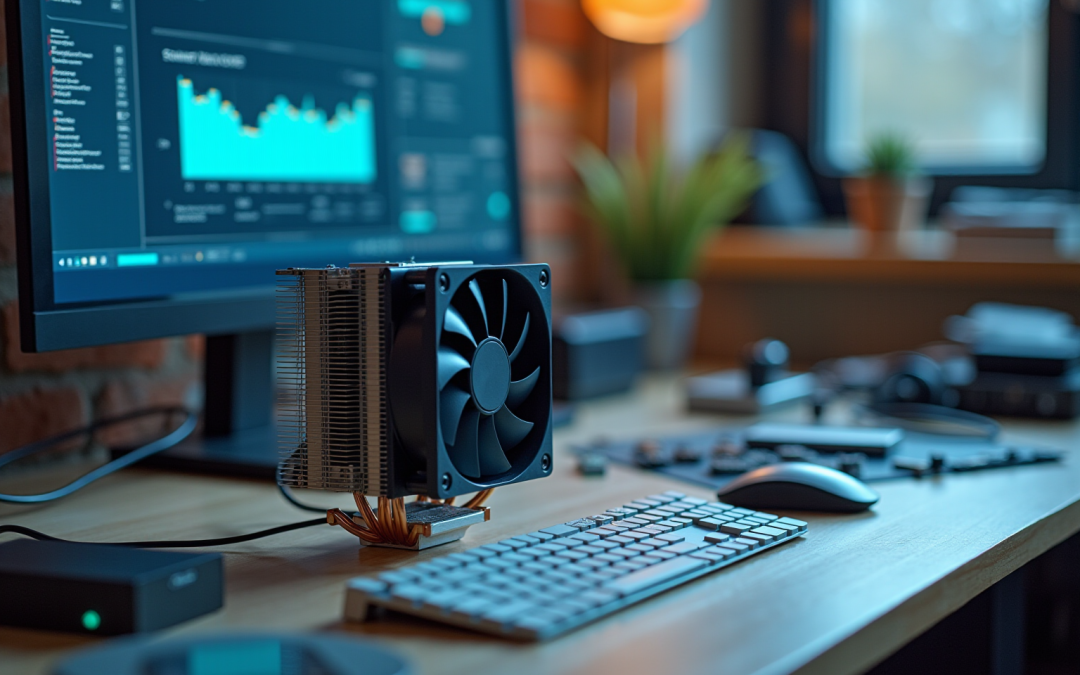Overview
The article emphasizes the myriad advantages of brushless cooling fans for electronics engineers, underscoring their efficiency, reliability, and cost-effectiveness. It articulates how these fans significantly reduce energy consumption, extend operational lifespans, and simplify installation processes. These features render them an indispensable component in contemporary electronic designs, thereby addressing the critical needs of engineers in the field.
Introduction
Brushless cooling fans are transforming the realm of electronic design, equipping engineers with a formidable tool to confront the escalating challenges of heat management in high-performance systems. These advanced devices not only promise improved energy efficiency and reliability but also offer a multitude of benefits that can significantly enhance the longevity and functionality of electronic components. As the demand for quieter, more compact, and cost-effective solutions intensifies, the critical question emerges: how can engineers fully harness the advantages of brushless cooling fans to optimize their designs while adeptly navigating the complexities of modern electronic applications?
Gagner-Toomey Associates: Innovative Cooling Solutions for Electronics Projects
Gagner-Toomey Associates stands at the forefront of innovative temperature regulation solutions, meticulously designed for electronics projects, with a pronounced focus on . These are increasingly recognized for their exceptional efficiency and reliability, making them a preferred choice among industry professionals.
Through strategic partnerships with leading manufacturers, Gagner-Toomey provides access to , empowering engineers to enhance in their designs. Current trends reveal a significant shift toward more sophisticated cooling solutions, propelled by the escalating demands of and the imperative for .
The integration of a brushless cooling fan not only elevates system performance but also contributes to and reduced maintenance costs. Expert insights underscore the critical role of these technologies in , enabling engineers to adeptly manage heat dissipation while ensuring optimal performance.
Successful applications of brushless cooling fans across diverse sectors underscore their vital contribution to advancing heat management strategies within the electronics industry.
Energy Efficiency: The Advantage of Brushless Cooling Fans
s from Gagner-Toomey Associates are by operating with greater efficiency. These units, featuring a brushless cooling fan, consume less power while delivering superior airflow, resulting in significant that lower electricity costs. Furthermore, their , fostering a cooler operating environment for electronic components through the use of a brushless cooling fan.
With an extensive product range that encompasses both standard and custom DC input devices and blowers, varying from 15mm to 280mm in size, engineers can leverage these advantages to create more .
These ventilators and blowers, such as the brushless cooling fan, are suitable for diverse applications across electronics, automotive, telecom, and industrial sectors, ensuring optimal in their respective uses.
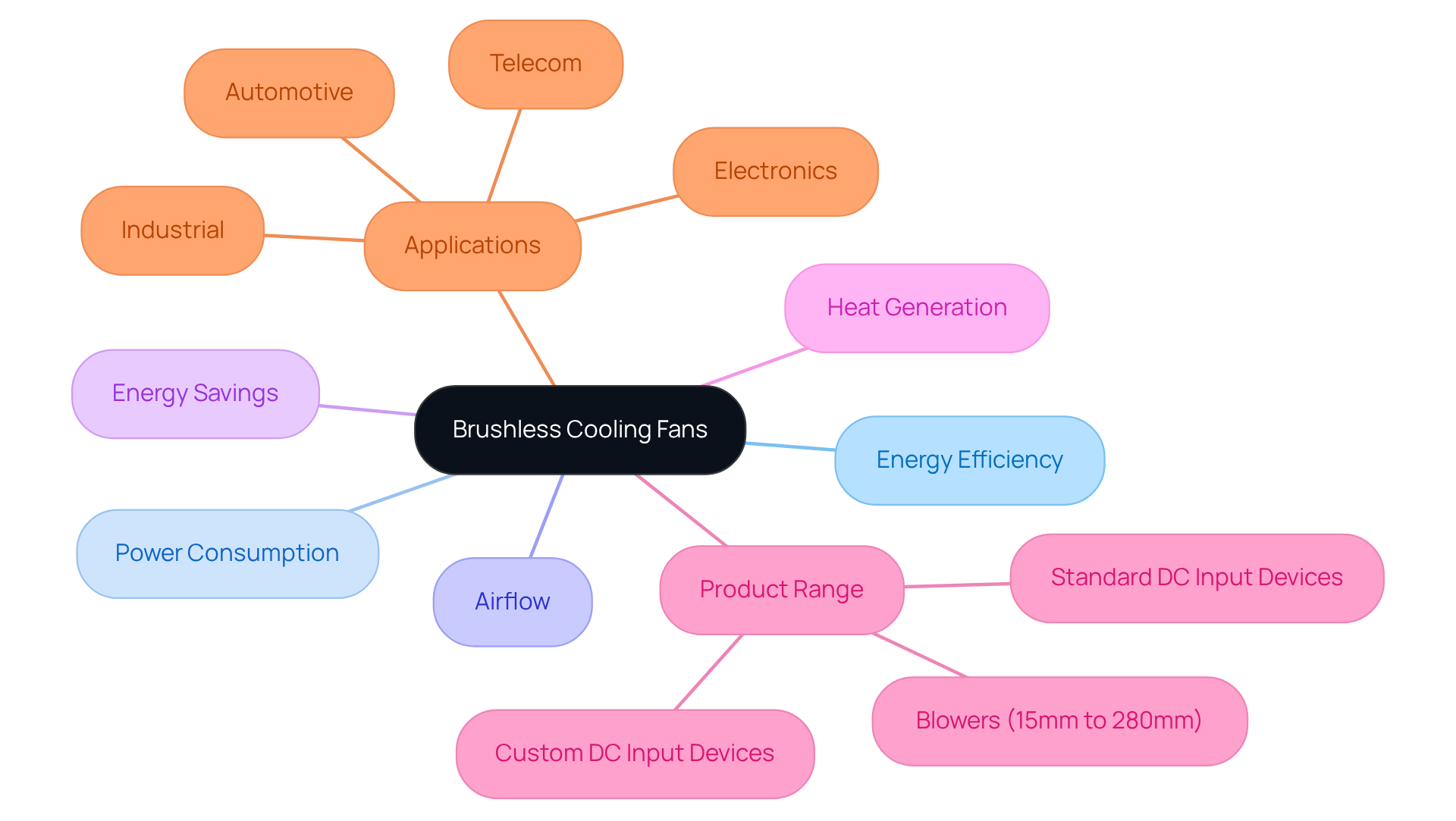
Reliability: Ensuring Consistent Performance with Brushless Fans
Brushless stand out for their exceptional reliability, a quality primarily attributed to their design, which features significantly fewer moving components compared to traditional brushed models. This reduction in complexity leads to lower wear and tear, resulting in markedly lower failure rates—often translating to .
Engineers can confidently rely on to deliver consistent performance, even in the most challenging environments. For example, case studies demonstrate that these units , such as medical devices and data centers, where .
The not only mitigates mechanical failure risks but also ensures quiet operation, making it ideal for noise-sensitive settings. Moreover, EC devices can , as evidenced by the University of Melbourne, which reported significant savings following their transition to EC models.
As the market for expands—projected to reach USD 5.6 billion by 2033—the advantages of motorized air circulators become increasingly apparent, establishing them as .
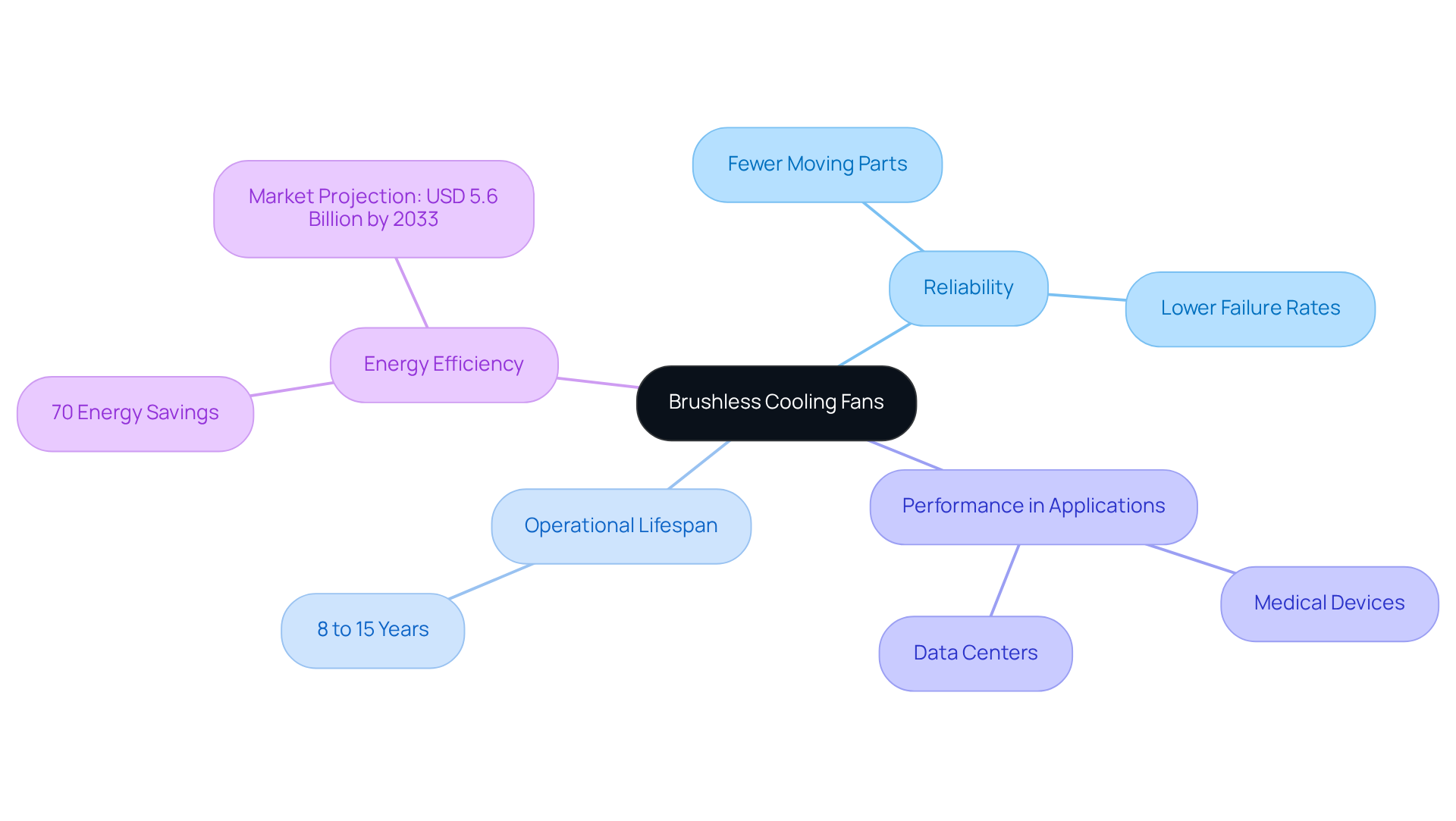
Noise Reduction: The Silent Operation of Brushless Cooling Fans
stand out for their exceptional silent performance, a significant advantage over conventional models that often generate considerable noise due to their brushed motors. The brushless cooling fan’s is particularly advantageous in scenarios where is and consumer electronics.
For example, in medical environments, the of a brushless cooling fan—operating at sound levels as low as 20 dB—create a more . Moreover, the ability to to create products that not only perform efficiently but also .
The integration of silent operation into electronics design is vital, as it directly influences user satisfaction and product usability. By emphasizing noise reduction, designers can ensure that their innovations meet the requirements of contemporary applications, where performance and user comfort are paramount.
However, it is essential to acknowledge that even with quiet cooling systems, some unavoidable noise from turbulent airflow may still occur, which designers must consider in their planning. This nuanced understanding of is crucial for optimizing both performance and comfort in electronic applications.
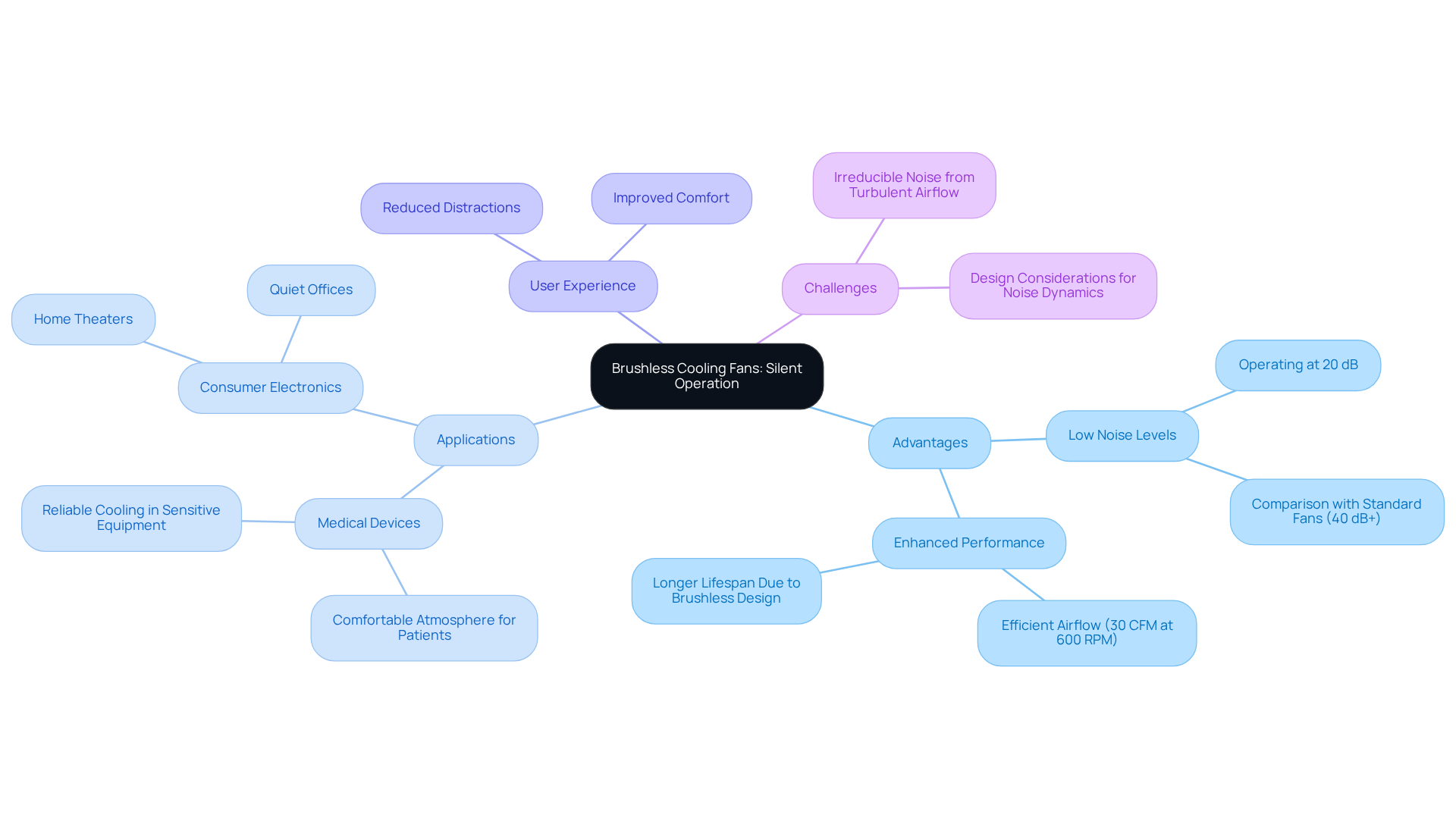
Versatility: Applications of Brushless Cooling Fans in Electronics
A versatile solution across a multitude of electronic domains, including computer systems, telecommunications equipment, automotive electronics, and industrial machinery, is represented by .
of both standard and custom air-movers for cooling, presenting an extensive portfolio of , available in sizes ranging from 15 to 280mm, alongside from 15 to 225mm. These products are meticulously optimized for performance, efficiency, and low noise operation. Notably, IP protection can be requested for most models, enhancing their usability in various environments.
empowers developers to integrate them seamlessly into diverse projects without sacrificing performance. With offerings that span from miniature blower solutions to , Gagner-Toomey’s innovative designs are tailored to meet the . This commitment to excellence positions Gagner-Toomey as a trusted partner in the advancement of electronic cooling technology.
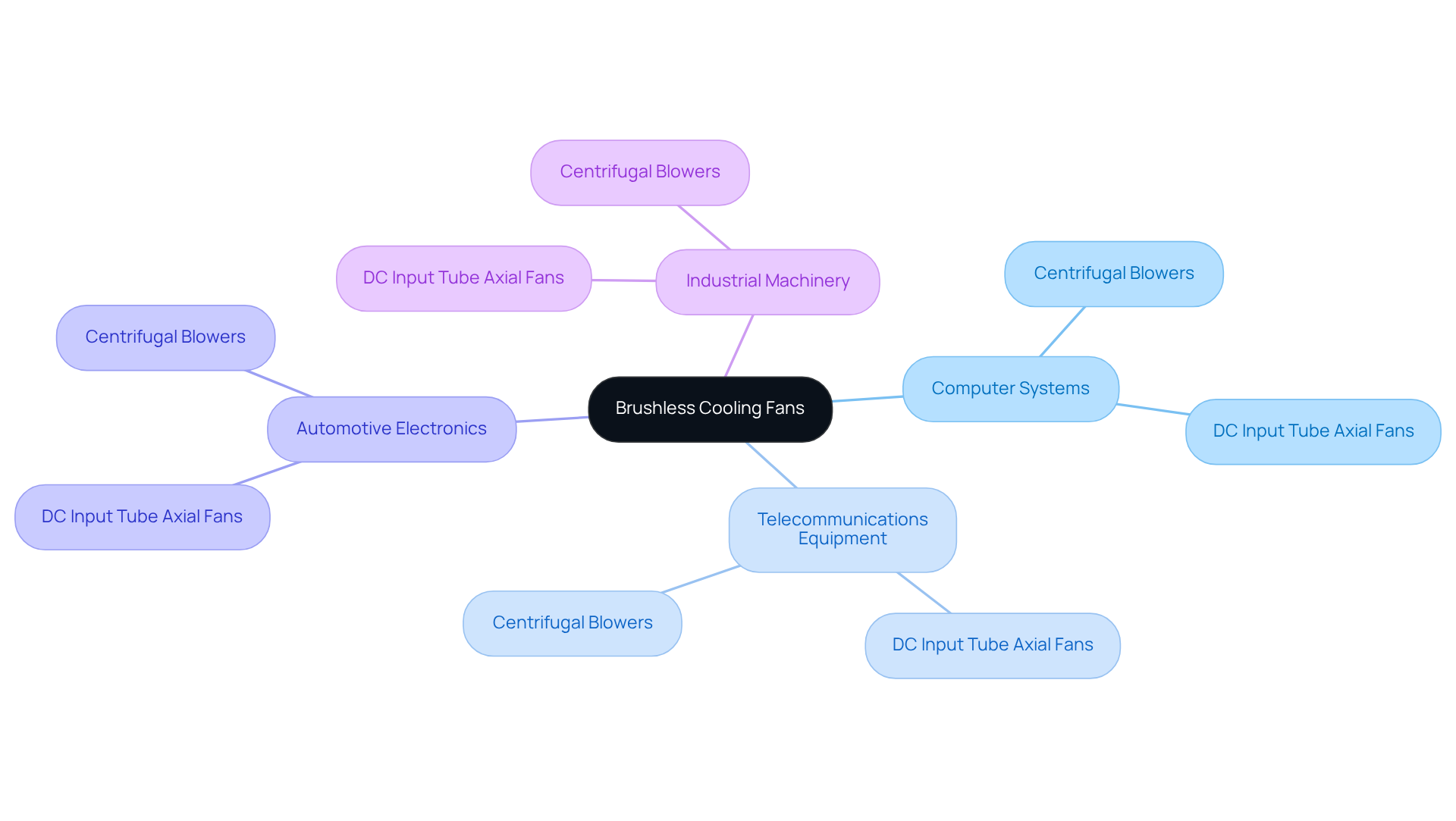
Compact Design: Space-Saving Benefits of Brushless Cooling Fans
are engineered for within electronic systems. , offers an extensive array of DC input tube axial devices and centrifugal blowers, , with IP protection available in most models. Their smaller footprint empowers engineers to design sleeker, more , which is essential in environments where space is at a premium, such as portable devices.
For instance, the integration of brushless cooling fans in 12V DC automotive applications effectively cools telematics systems, entertainment consoles, cameras, and sensors, all while minimizing the overall size and weight of the cooling solution. This ensures that the vehicle’s avoids significant drain due to the of these devices.
Furthermore, these devices are specifically mounted on panels or cabinet walls within electrical enclosures to draw cooler air in and expel hot air out, effectively preventing excessive heat accumulation. , allowing for airflow paths based on internal layouts, thereby enhancing the performance and longevity of components.
The durability, resistance to vibration and contamination, and low power consumption of the brushless cooling fan further bolster its appeal, establishing it as a preferred choice in .
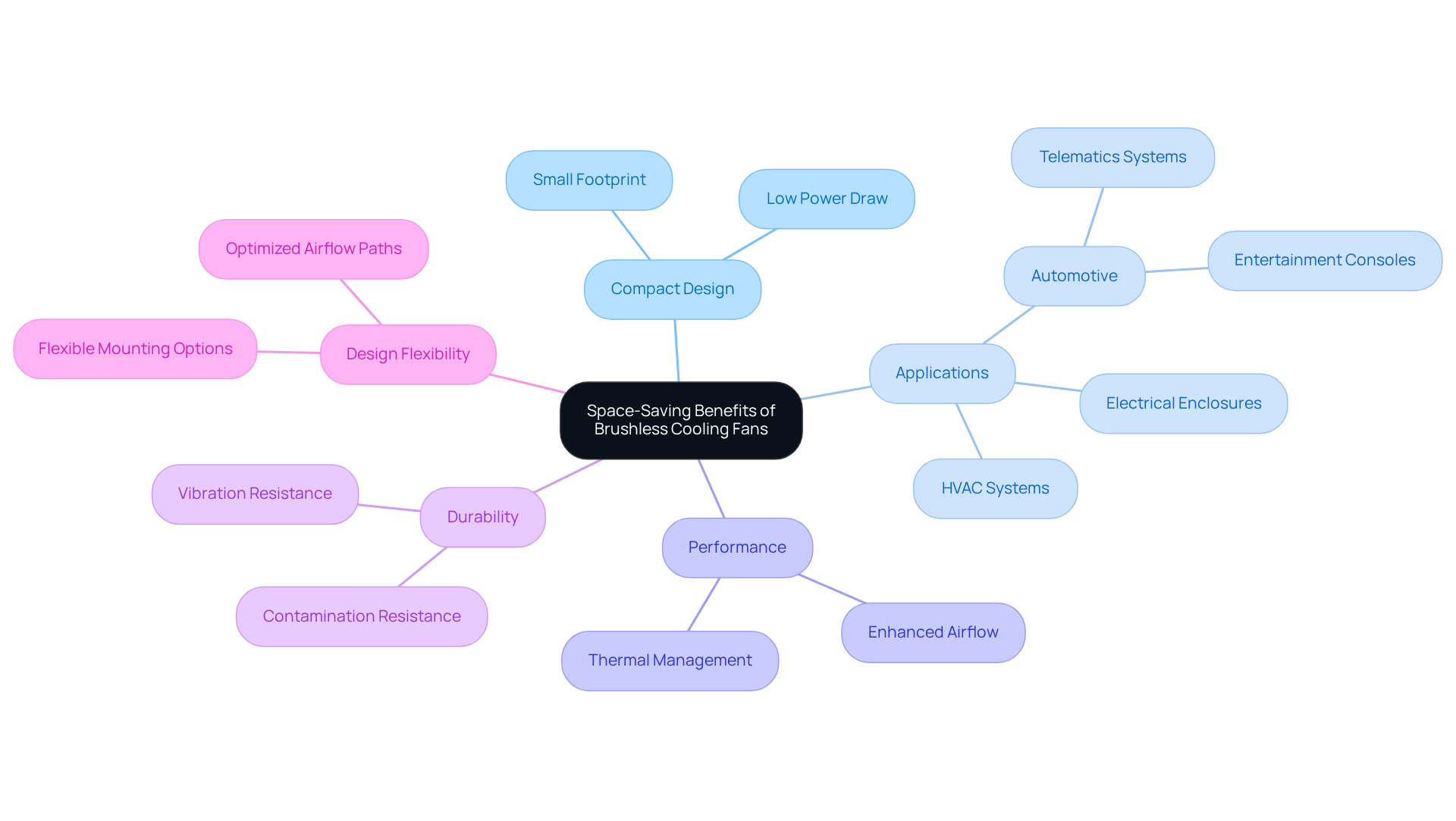
Thermal Management: Preventing Overheating with Brushless Cooling Fans
s are essential in , providing consistent airflow that effectively dissipates heat generated by electronic components. By preventing overheating, these devices ensure systems operate within safe temperature limits, thereby enhancing performance and extending the lifespan of . Engineers can rely on a brushless cooling fan to maintain in their designs.
Notably, a 25% reduction in fan speed can lead to a 25% decrease in airflow, yet it also results in a remarkable 60% reduction in power consumption, underscoring the of precise fan control. Expert insights emphasize that, given the increasing density of integrated circuits (ICs), such as a brushless cooling fan are crucial for effective heat management.
As Daren Perez notes, PWM is a valuable tool that empowers professionals to balance airflow, noise, and power consumption according to the demands placed on their system at any moment. This adaptability is critical in preventing overheating and ensuring the reliability of electronic systems.
To implement these strategies effectively, that support , facilitating dynamic adjustments based on .
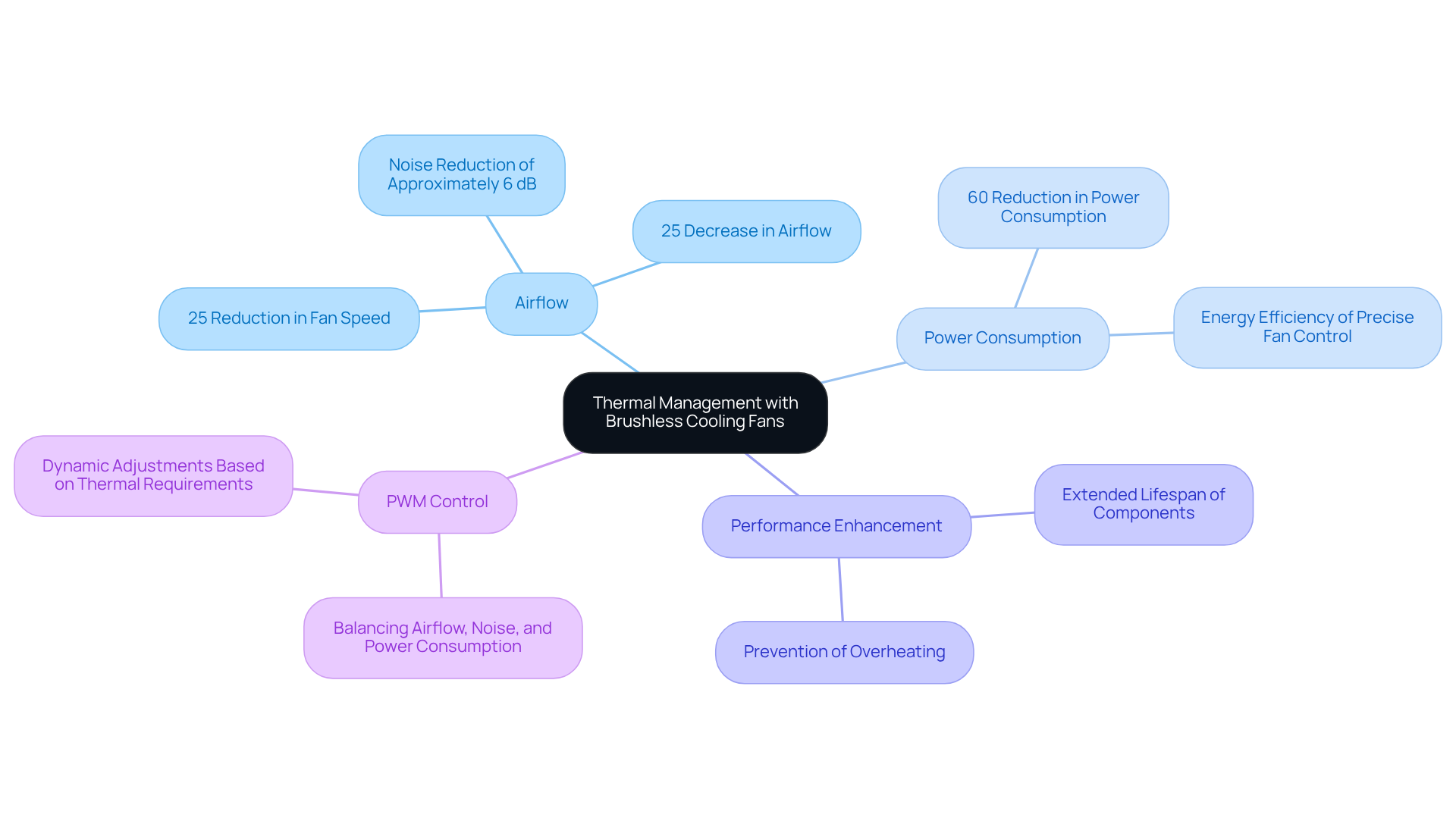
Longevity: The Extended Lifespan of Brushless Cooling Fans
that utilize a are meticulously engineered for exceptional durability, often surpassing the lifespan of conventional models significantly due to their , which eliminates components prone to wear and tear. This enhanced durability not only minimizes the frequency of replacements but also results in substantial savings in maintenance costs.
For instance, institutions such as the University of Melbourne have reported a remarkable 70% reduction in energy consumption and annual savings exceeding $2,000 after transitioning to , which utilize up to 50% less electricity compared to traditional AC motors. Furthermore, the innovative motor design contributes to , thereby reducing maintenance requirements and bolstering overall system reliability.
Although EC motors may entail a higher initial investment, the unequivocally justify the expenditure. As a result, professionals can confidently invest in brushless devices, ensuring both performance and cost-effectiveness in their electronic systems.
John Palomba from ebm-papst Inc. underscores that “In an era where every watt counts, the provide a clear path forward—one that supports both operational excellence and environmental responsibility.
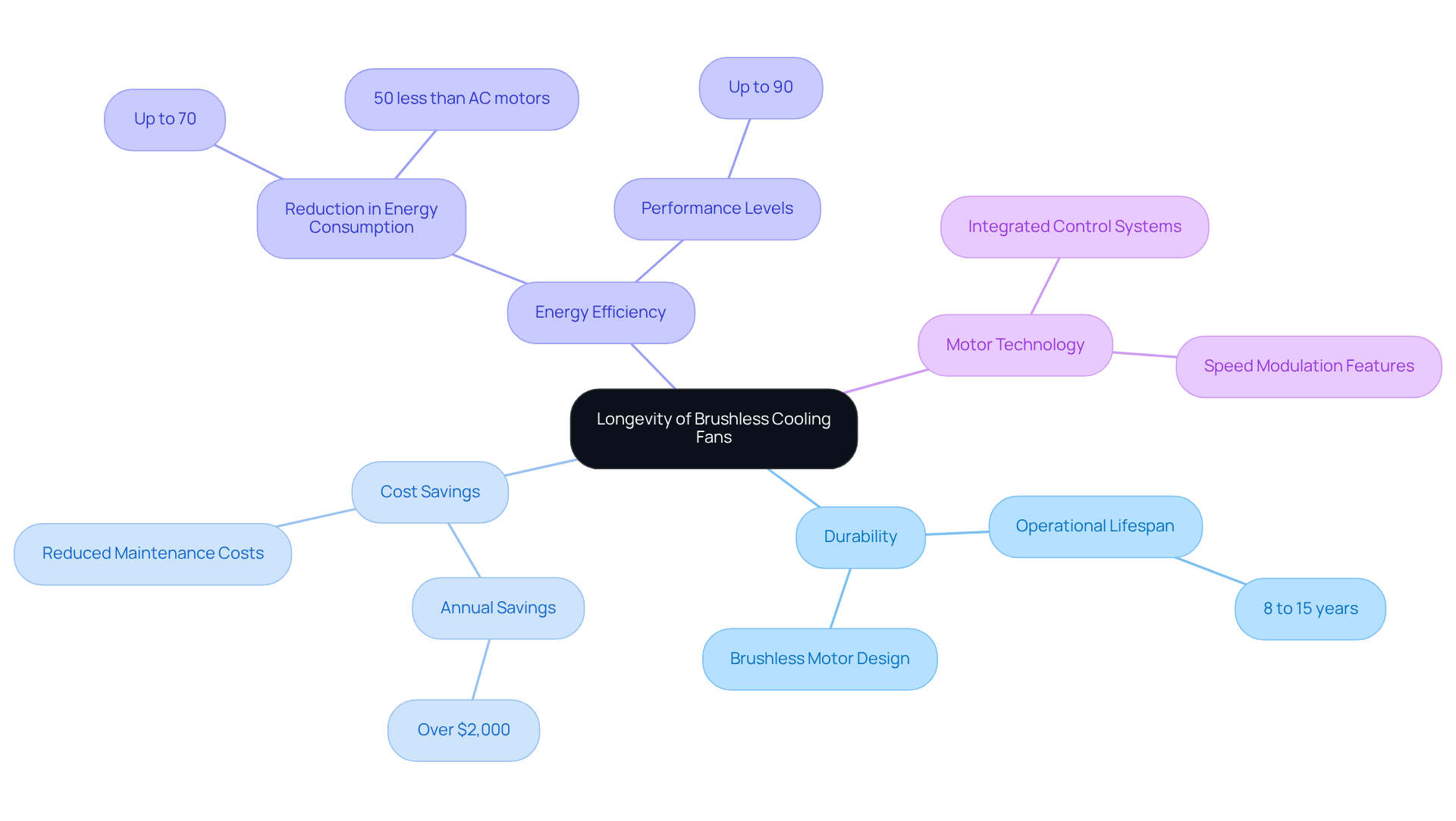
Ease of Installation: Simplifying Setup with Brushless Cooling Fans
are designed for straightforward , often featuring standardized mounting options and uncomplicated wiring configurations. This allows professionals to integrate them into their projects swiftly and effectively, thereby and during setup. The straightforward characteristics of these devices, such as the brushless cooling fan, make them an attractive choice for .
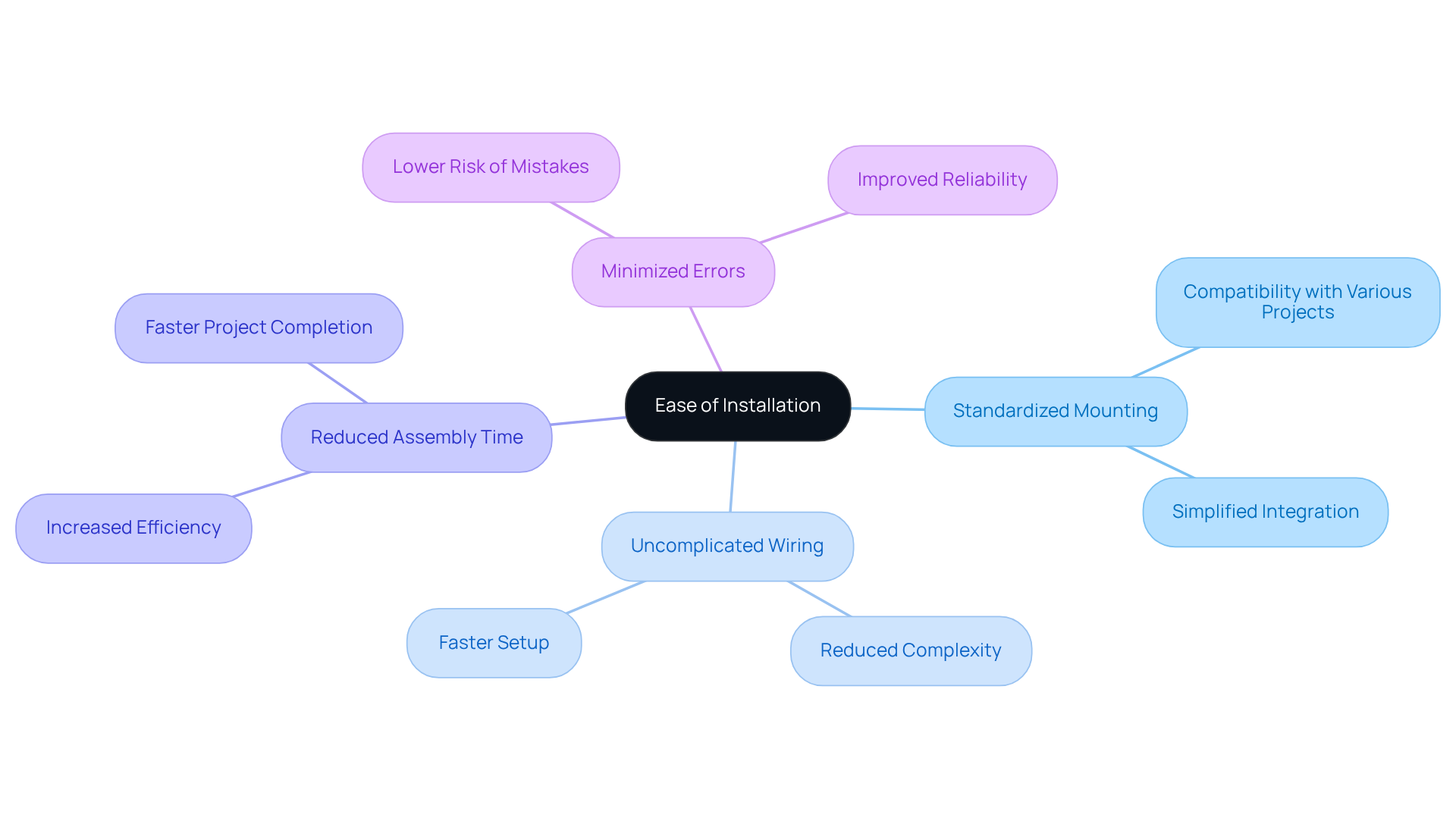
Cost-Effectiveness: Budget-Friendly Benefits of Brushless Cooling Fans
While without brushes typically require a , their , extended lifespan, and minimal maintenance needs render them a . These fans can diminish energy consumption by up to 70% compared to traditional AC motors, resulting in and a reduced environmental impact.
For example, facilities employing have reported annual reductions in electricity costs of 30-50%, with payback periods for initial investments often spanning one to two years. This financial advantage is particularly pronounced in high-energy sectors, such as commercial buildings and data centers, where climate control systems constitute a significant portion of total electricity expenses.
By mitigating downtime associated with fan failures, which can last 8-15 years, professionals can and achieve a more favorable return on investment. Therefore, the of using a brushless cooling fan are crucial factors for engineers aiming to optimize performance while adhering to budgetary constraints.
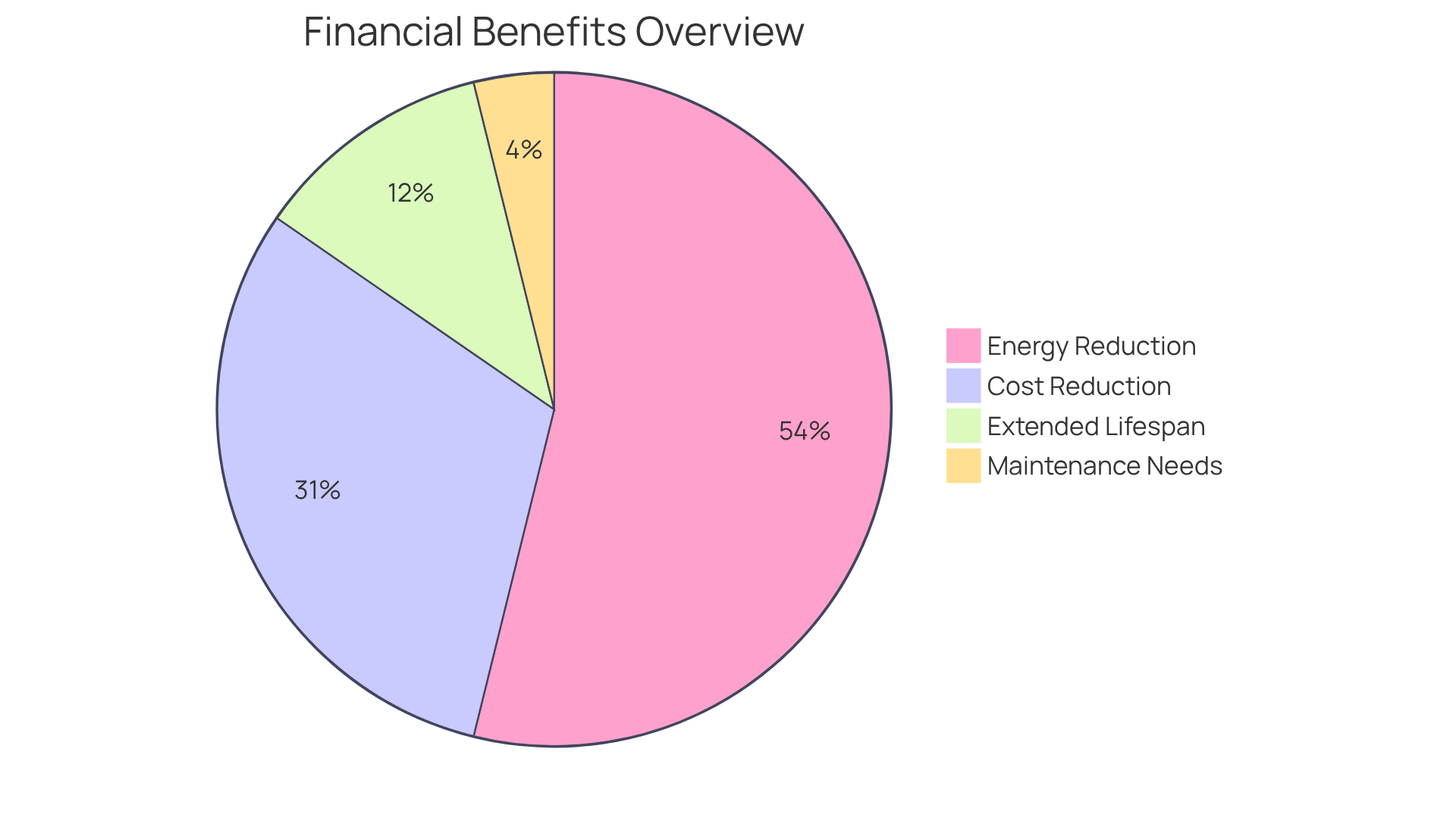
Conclusion
Brushless cooling fans signify a pivotal advancement in electronic cooling technology, equipping engineers with a formidable tool to enhance performance and reliability in their designs. These fans not only elevate energy efficiency but also prolong the operational lifespan of electronic components, rendering them an essential asset in today’s high-performance electronics landscape.
Key benefits such as energy efficiency, reliability, noise reduction, and versatility have been underscored throughout this discussion. Brushless cooling fans consume markedly less power while providing superior airflow, resulting in reduced operational costs and minimal environmental impact. Their compact design facilitates seamless integration into a multitude of applications, from automotive systems to medical devices, ensuring optimal thermal management without sacrificing space or performance.
As the demand for efficient and reliable cooling solutions escalates, adopting brushless cooling fan technology is not merely a choice but a necessity for electronics engineers. By harnessing these advanced cooling solutions, professionals can significantly enhance the functionality and longevity of their systems while contributing to a more sustainable future in electronics design. Investing in brushless cooling fans is a strategic decision that promises substantial long-term benefits, making it imperative for engineers to integrate these innovations into their forthcoming projects.
Frequently Asked Questions
What is Gagner-Toomey Associates known for?
Gagner-Toomey Associates is known for innovative temperature regulation solutions for electronics projects, with a strong emphasis on brushless cooling fan technology.
Why are brushless cooling fans preferred in the industry?
Brushless cooling fans are preferred due to their exceptional efficiency and reliability, which enhance system performance, prolong operational lifetimes, and reduce maintenance costs.
How does Gagner-Toomey Associates support engineers in their projects?
Gagner-Toomey Associates supports engineers by providing access to cutting-edge advancements in temperature regulation technology through strategic partnerships with leading manufacturers.
What trends are influencing the development of cooling solutions?
Current trends indicate a shift towards more sophisticated cooling solutions driven by the increasing demands of high-performance electronics and the need for energy efficiency.
What are the energy efficiency advantages of brushless cooling fans?
Brushless cooling fans operate with greater efficiency than conventional models, consuming less power while delivering superior airflow, which leads to significant energy savings and a cooler operating environment for electronic components.
What range of products does Gagner-Toomey offer?
Gagner-Toomey offers an extensive product range that includes both standard and custom DC input devices and blowers, varying in size from 15mm to 280mm.
In what sectors can brushless cooling fans be applied?
Brushless cooling fans can be applied across diverse sectors, including electronics, automotive, telecom, and industrial applications, ensuring optimal thermal management.
What makes brushless cooling fans reliable?
Brushless cooling fans are reliable due to their design, which has significantly fewer moving components than traditional brushed models, resulting in lower wear and tear and failure rates.
What is the expected operational lifespan of brushless cooling fans?
The operational lifespan of brushless cooling fans typically ranges from 8 to 15 years.
How do brushless cooling fans perform in challenging environments?
Brushless cooling fans maintain optimal airflow and efficiency even in challenging environments, making them suitable for critical applications like medical devices and data centers.
What are the noise characteristics of brushless cooling fans?
Brushless cooling fans ensure quiet operation, which is ideal for noise-sensitive settings.
How much energy can EC devices save compared to traditional models?
EC devices can reduce energy consumption by up to 70%, as shown by studies such as the one conducted by the University of Melbourne.
What is the projected market growth for energy-saving solutions?
The market for energy-saving solutions is projected to reach USD 5.6 billion by 2033, highlighting the growing importance of motorized air circulators in modern electronic systems.

